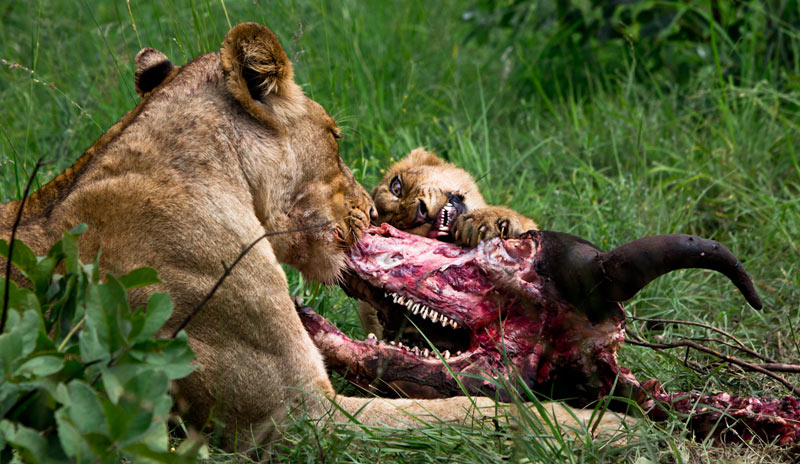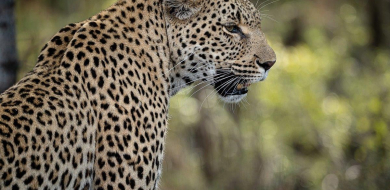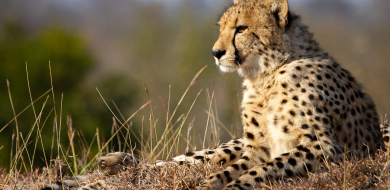Hidden Depths
on Dec 17, 2014There are often moments in photography where you want to be able to capture multiple facets of the image. By that I mean that the most striking aspect of the photograph is more than just one point. One of the most fundamental skills a photographer needs to master is that of the "depth of field".
The aperture function of the camera changes the amount (or depth) of the photo that is in focus. A smaller aperture (or 'f' stop) is necessary if you want to keep the focus point sharp but blur the rest of the background. For example, a bird in a tree: the bird should be sharp but the background should not detract from the subject. A bigger aperture is needed should more depth of focus be required. The aperture needed will however change depending on your distance to the subject and this can only be learned by practice!

In this picture, I wanted to capture the whole scene as I felt that would deliver maximum impact. I wanted the muscles of the female lion's foreleg, the detail of the buffalo's skull and most importantly, the expression on the face of the cub. I therefore increased the aperture to f6.3 to make sure all three aspects were in focus. The depth needed was not too great but had to be enough to capture all 3 properties whilst still keeping the 'noisy' background blurred. As always during the day, I took this on aperture priority, thus allowing me to change the effect of the photo and letting the camera work out the appropriate shutter speed. Even though the sun was high in the sky I used ISO 250 to ensure a fast shutter speed to negate the glare and ensure I froze the expression on the cub's face.
These subtle differences that can be achieved by manipulating the aperture can make or break a photograph; and understanding the effects that can be achieved are an essential weapon in the arsenal of a keen photographer. Every camera is different however and trial and error is the only way to learn the distances that will influence your photograph. The digital age has made this easy, so get out there and practice!
Photo details: Canon 60D; Canon IS 70-200mm f2.8; ISO 250; F6.3; 1/1000
Stay Composed!
Ben Coley






